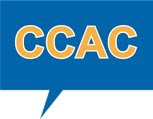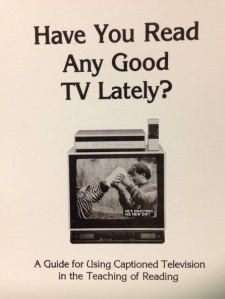Live Music & Live Lyrics & Live Subtitles
Last month I did something I’ve never done before, and I don’t think many others will have done it either. What was it? I attended a live music gig with live subtitles! The gig was called Club Attitude. It was organised by Attitude is Everything and the live subtitling was provided by StageTEXT.
Having been to several StageTEXT captioned plays, and live subtitled talks I was pretty confident that the quality of the live subtitles would be excellent. But I also know that high quality subtitling doesn’t just happen without a lot of prep, a lot of technical set up, and of course skilled subtitlers.
I am sure that this gig had its challenges, especially considering it hadn’t been done before but I was really pleased to see that even for this first ever subtitled gig, the access worked well. I felt for the stenographer wearing their headphones listening intently in order to deliver the lyrics in a time accurate manner in what was already musically noisy environment. Talk about powers of concentration!
The subtitles were displayed on both sides of the stage at a high height on the right so that the screen could still be seen at the back of the venue (as per the Vine above) and also on a screen at a low height on the left side of the stage in case wheelchair users also wanted to read the captions throughout the gig. I should also point out there was also a signer on stage translating the lyrics into BSL for BSL users. None of this got in the way of the band members performing. It was lovely to see full access had been thought of and was indeed being provided including an accessible venue (if only this was the norm and I wouldn’t even point it out in a review like this but sadly it is not always the case).
I’d love to have known what the artists performing at the gig thought of the live subtitles (although they cannot really see it from their position on the stage.) But if they are reading this article, or any other bands who might be thinking about captioning or subtitling their gigs, an overlooked but massive benefit isn’t just the lyrics. I shall try to explain:
Because the subtitling provided at this gig was live, the dialogue and conversation that the bands had with the audience is also subtitled. I am taking about the intro and chat between songs. “Hello everyone, thanks for coming.” etc That might not seem important but what if you happen to be talking to the audience about where they can buy your music or your merchandise? Ordinarily this information is lost on me. The number of gigs I’ve been to where I can enjoy the music (because I’ve listened to the songs over and over and looked up the lyrics on the internet) but cannot understand any of the talking is well pretty much all of them without a hearing friend confirming what’s being said. Even if I am close to the stage, I can’t lip-read you – your microphone is in the way. And this means you’ve lost communication with me and a connection. What I often hear is something like, “And so fdfgddfas this is our next song that dfawesfasdf and its called dfaefavdfa.” What this means is, I never catch the song title, so if I like the song, I can’t go home, search the title online, listen to it again, and you know maybe buy it!
So, we know live subtitling of music can be done, so why isn’t it done more often? I do hope we have got rid of the misconception that deaf and hard of hearing people are not music lovers. I can relate to an awful lot written in this great article from @ItsThatDeafGuy especially the bit about getting the lyrics from Smash Hits magazine and subtitled music on TV! Being Deaf Doesn’t Mean You Don’t Care About Music.
I too have blogged several times already on this subject including my frustration that music DVDs seem to be exempt from requiring subtitles, and how having access to subtitled music via TV was hugely important to me as a teenager. And it still is. Search the music tag for more articles.
And who doesn’t love knowing what the lyrics are? The way we consume music has changed drastically in the last 20 years, and technology is providing new ways to get the lyrics. Recently the music streaming service Spotify launched lyrics integration and the company has been retweeting the positive feedback it is getting about it.
https://twitter.com/marchaumann/status/584831791250309120
I also can’t help but notice that the trend of official lyric videos being released by music artists isn’t going away. And that’s just fine by me because a probably unintentional side effect is that it gives me access to the song and allows me to consume the music in my preferred way by reading the lyrics alongside listening to the song. Arena and stadium artists have started to incorporate this into some of their video screen stage graphics during concerts. And naturally I love this.
Given all of these trends maybe this reviewer of Club Attitude is right: Perhaps the most extraordinary thing is that this gig night does not feel extra-ordinary at all. Now that would be something.





Victoria O'Hara 5:47 pm on August 30, 2015 Permalink |
Afternoon. I am working on a research proposal, and I was wondering if there was any way that I could ask you a few questions about closed captioning in the UK?
LikeLike
iheartsubtitles 3:43 pm on September 7, 2015 Permalink |
Hi Victoria, I have sent you an email.
LikeLike
Mrs Nunney 11:17 pm on December 5, 2018 Permalink |
I need subtitles to watch tv. I cannot cope with cds I I would very much like subtitles on music
DVDs. The people who do not want them do not have to have them on but there must be a lot
Of people like me who would be very grateful
LikeLike